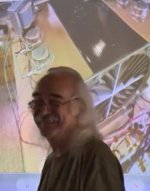May be somebody with a bit experience in PCB layout could add a buffer? I would assume it is possible to move the existing buffer to the left and add one for the inverted signal without too much trouble?
There will be a new GB for the PCBs soon... perfect opportunity to upgrade to balanced/buffered if we have a layout. 😀
Regards
Sven
There will be a new GB for the PCBs soon... perfect opportunity to upgrade to balanced/buffered if we have a layout. 😀
Regards
Sven
Are you referring to a 20 ohm pot in the buffer?
😎
I should rephrase my question. As part of startup/final adjustments what do I need to think about with the 20K pot on the input buffer?
Regards,
Dan 😕
I bring an old question that last night became again in my mind.
In the original' design the transformers were connected to the gate and the source of the vfet, why the 220 capacitor? Does is necessary use this ?
In the original' design the transformers were connected to the gate and the source of the vfet, why the 220 capacitor? Does is necessary use this ?
I should rephrase my question. As part of startup/final adjustments what do I need to think about with the 20K pot on the input buffer?
Regards,
Dan 😕
He is reminding you that it's a 20 Ohm not 20,000 Ohms.
As for adjusting it. Just make sure the wiper is at 0 volts when the amps is warmed up and running. 🙂
The 20K pot that's part of the buffer adjusts the dc offset at the output?
Regards,
Dan 😕
The optional Jfet 'buffer' you are talking about feeds the input of the transformer. It is a 20 ohm pot, it needs to be adjusted for 0 dc on OUTPUT of BUFFER, not output of amplifier!
Having 0 dc on the buffer output keeps dc from the input windings of the transformer which would saturate the transformer and limit bass response, I think.
If you are using the buffer, you need one for each balanced input. For RCA input you only need one buffer.
Rush
He is reminding you that it's a 20 Ohm not 20,000 Ohms.
As for adjusting it. Just make sure the wiper is at 0 volts when the amps is warmed up and running. 🙂
Whoooops!! Significant brain fart! I did do 20K instead of 20!

Thanks,
Dan
Thanks Father Pass
Without you some of us would be lost in the wilderness. 😉
Regards,
Dan
Thanks Father Pass
Without you some of us would be lost in the wilderness. 😉
Regards,
Dan
+1 😀
Attachments
you can directly feed xformer with balanced signal , in floating mode
if you need buffer prior to xformer - it is SE on the board , so only SE input
for balanced buffered , then you need balanced buffer , which is two SE buffers in fact ....... and you're not having that on board
completely other approach is using stereo F6 in bridged ........ in which case one channel is fed from XLR positive (pin 2) , other from XLR negative (pin 3) , and outputs are taken from channel's hots ........
things are simple ...... when you take them in small steps
Could you also do a bridged CSX1????
Thanks
4 boards
1 board left pos input
1 board left neg input
1 board right pos input
1 board right neg input
My pre has 1k output impedance
and yes I do have buzz's Funny ^6 but inquiring minds want to know
Thank you
1 board left pos input
1 board left neg input
1 board right pos input
1 board right neg input
My pre has 1k output impedance
and yes I do have buzz's Funny ^6 but inquiring minds want to know

Thank you
You answered yourself, you looks like my wife, asking in high voice what is better for her with the intention of share her thinkings. Of course you can, or, somebody please confirm I am wrong.
- Status
- Not open for further replies.
- Home
- Amplifiers
- Pass Labs
- Article - Sony VFETs part 1


